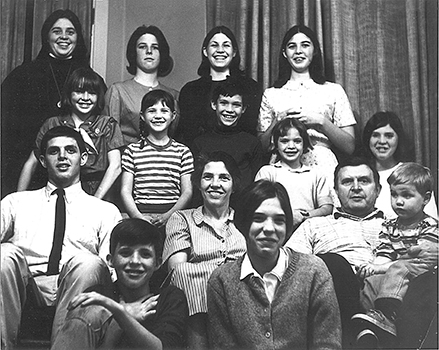
The personal is political in this fascinating documentary by Emily Topper and Mary Posatko that looks at one family tragedy through the lens of white guilt, unconscious racism, and a period of great social upheaval in Baltimore. In 1972, Topper’s grandfather Henry Selhorst was murdered in the parking lot of Edmondson High School. He was there to join others in protesting the building of 1-70 (the so-called “Road to Nowhere”), which he feared would further divide an already segregated community. Henry was a civil rights believer, if not quite activist (attending this meeting was one of his rare moments off the arm chair). His children mostly followed his legacy and some even took his liberalism further—Topper’s mother, for example, considers herself a Marxist.
So what happened on that day? There is an agreed-upon family version of the murder: That three young black men killed Henry, in a racially motivated crime to earn street cred. There are other firmly held beliefs: That defense attorney Juanita Jackson Mitchell (of the famed Mitchell family) played the race card during the trial, that the jury was all black, that the young men got off on a technicality. But as Topper delves deeper and deeper into the case—becoming somewhat obsessed herself—she discovers that these beliefs are merely assumptions. Of Henry’s 13 children, only one attended the trial.
“[We] didn’t want to look Ku Klux Klanny,” one of Topper’s aunts explains.
There is one sibling who resents this fact: Uncle Tommy, the youngest, and the family’s dark sheep of sorts: conservative (“AM radio, not NPR” he says), gay, with a history of drug use. He is an intriguing and compelling figure, who rails against his family’s “fear” of the case and is more than happy to express his outrage.
Because Topper is interviewing family members and excavating family history, and because the film is as much about the mythology of the murder as the murder itself, Baltimore in Black and White sometimes evokes Sarah Polley’s brilliant Stories We Tell. In this case though, Topper and Posatko are looking to put this one family’s tragedy in a much larger social context. There are surprises along the way—none of which I’ll reveal here. (Okay, I have already have revealed one of the surprises. Early in the film, Topper’s seemingly endless unspooling of aunts and uncles is a source of great amusement.)
There may be no neat resolutions , but by the end, you’ll have gained a deeper understanding of Baltimore—then and now—and met a fascinating family that has been bent, but not broken, by their unhappy past.
Baltimore in Black and White plays at the Maryland Film Festival on May 9 and May 10.
